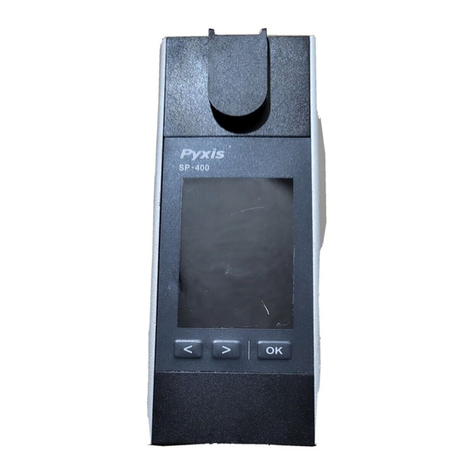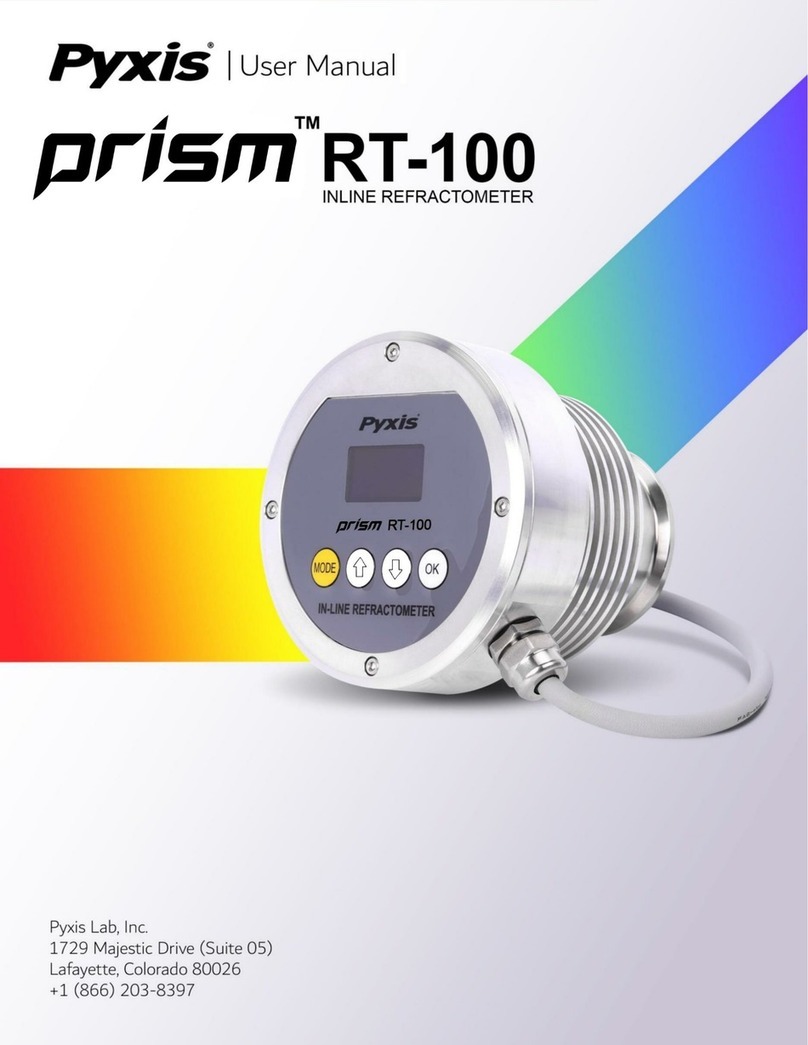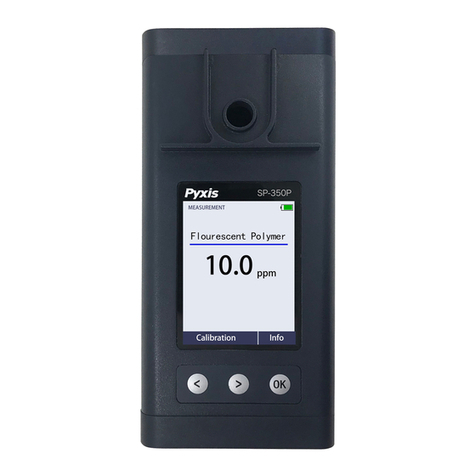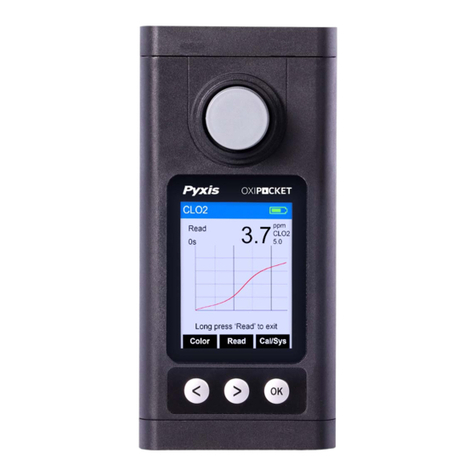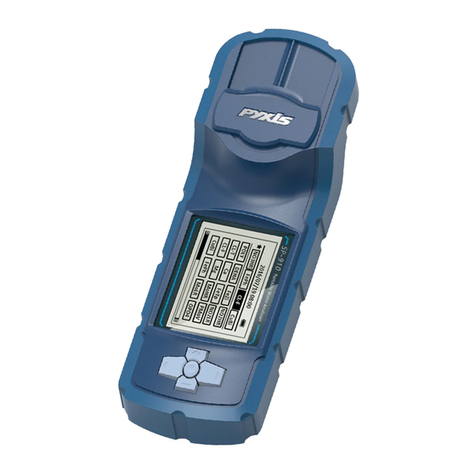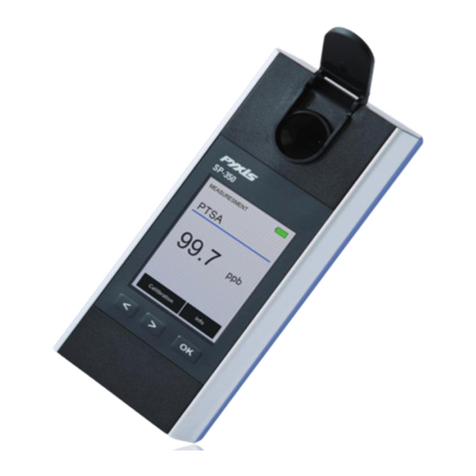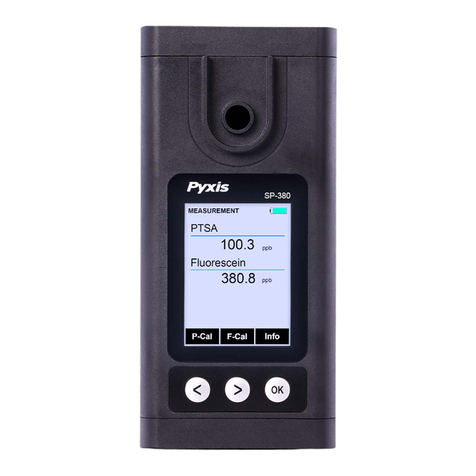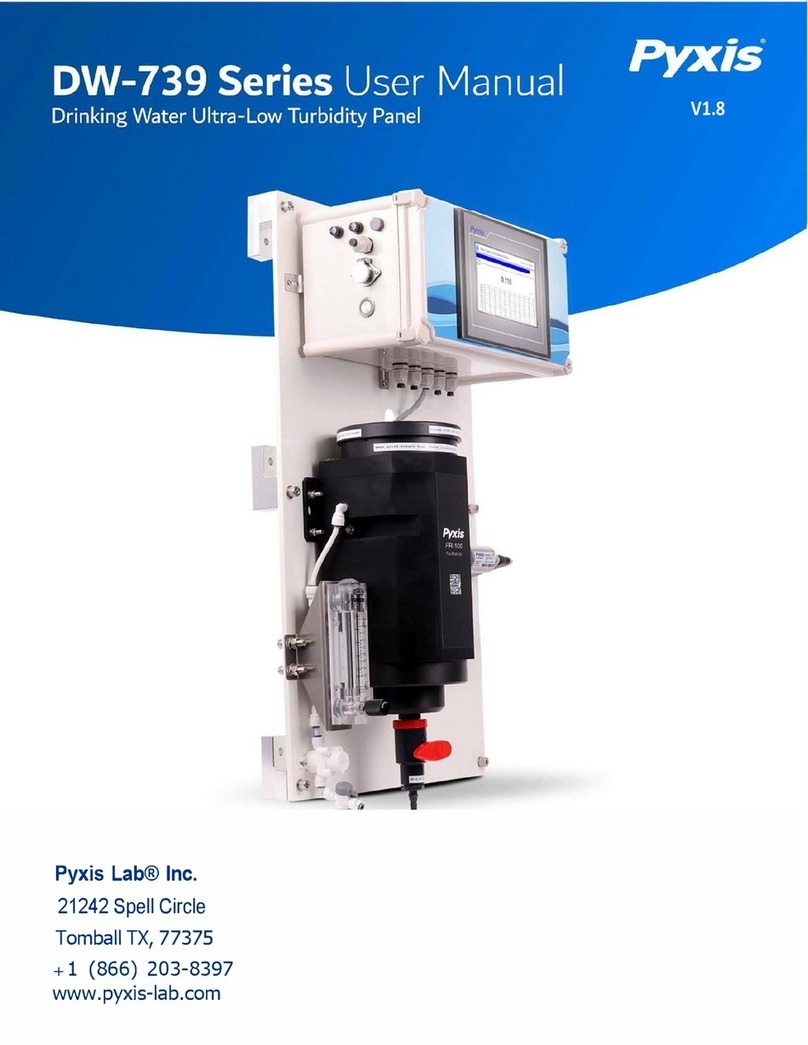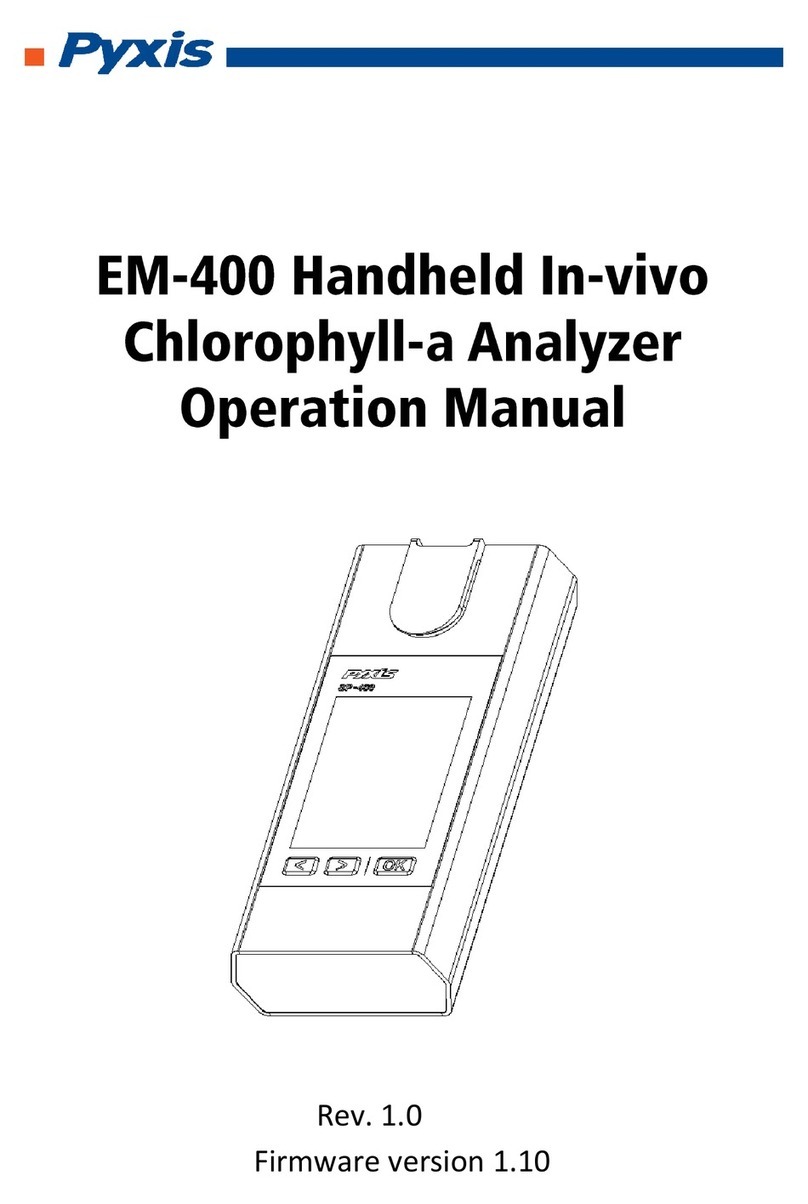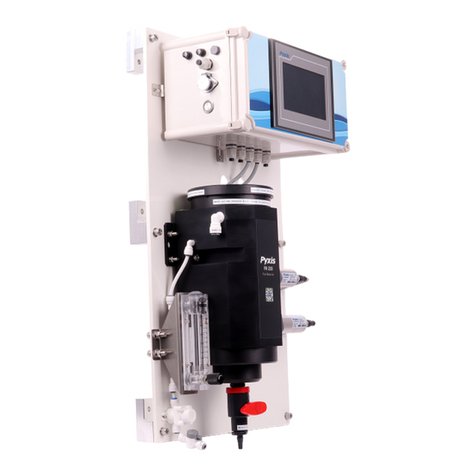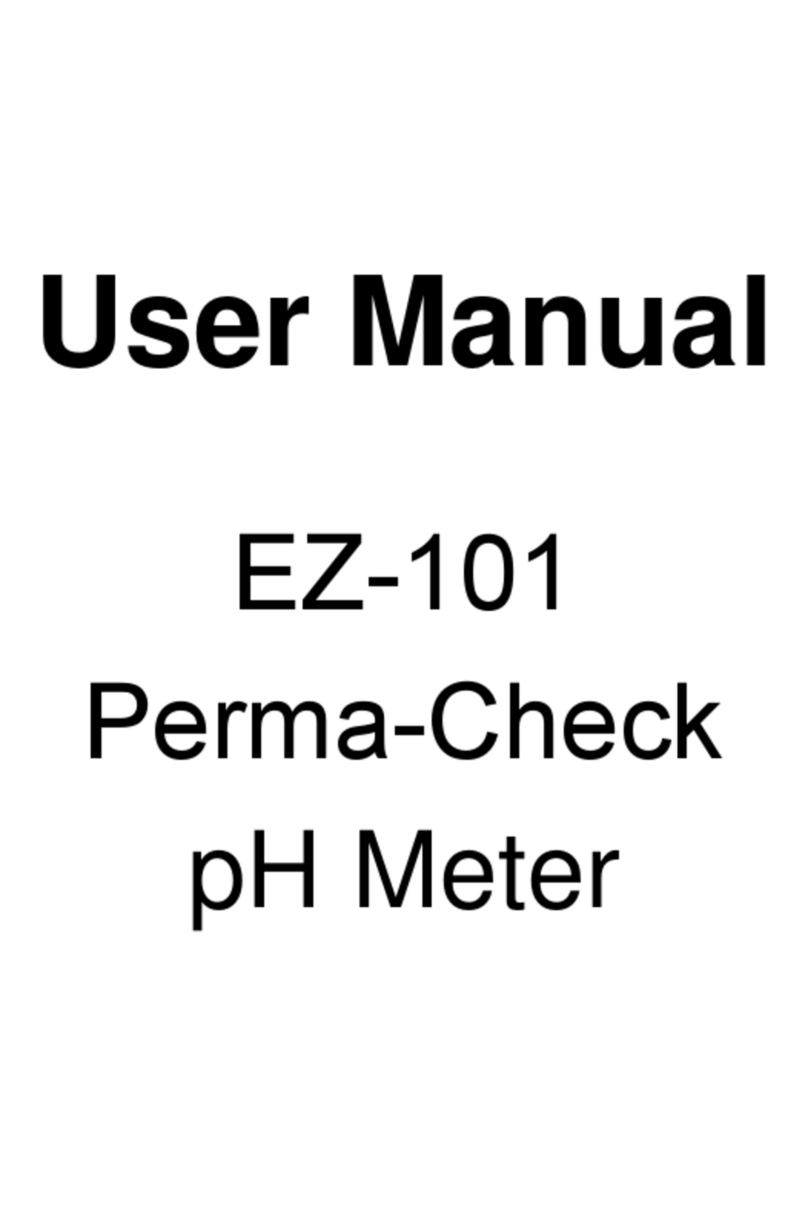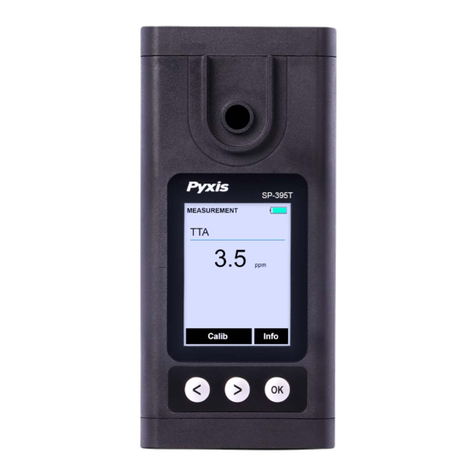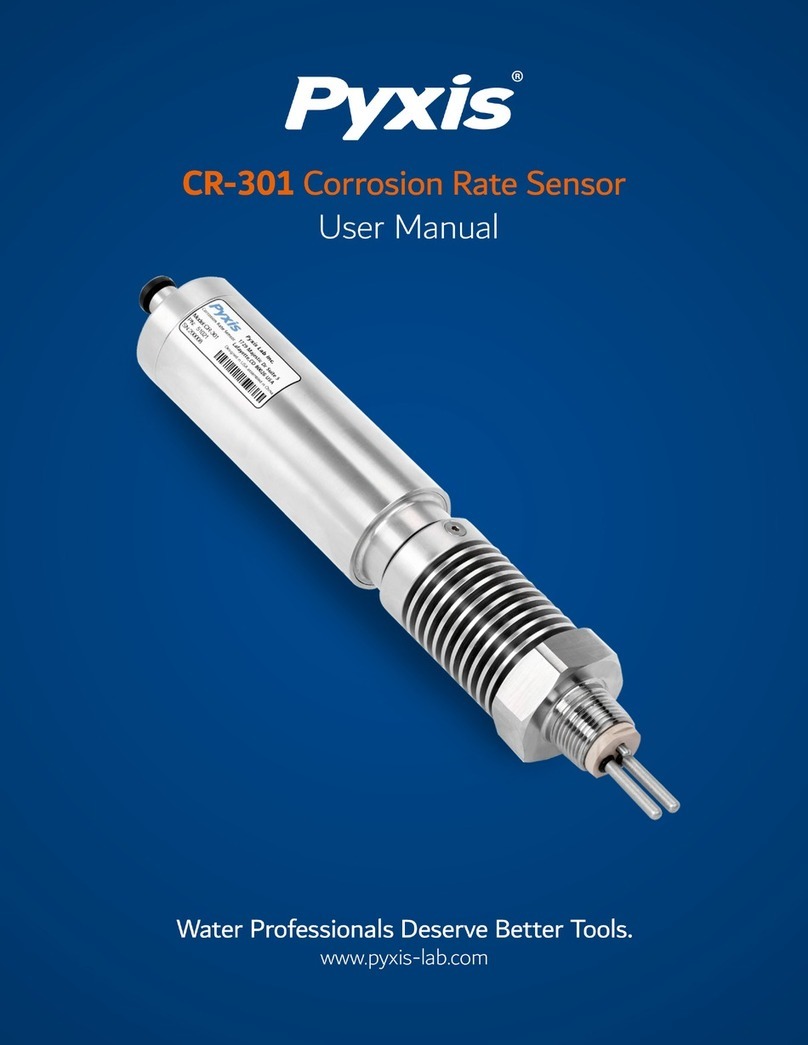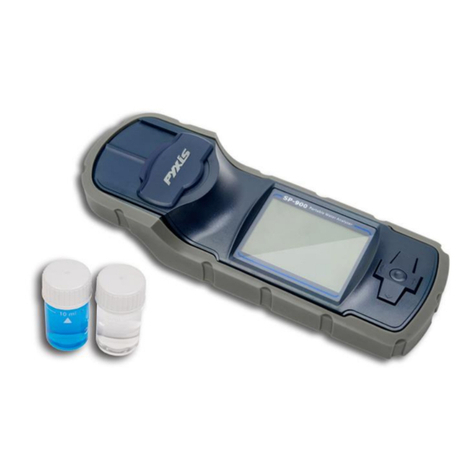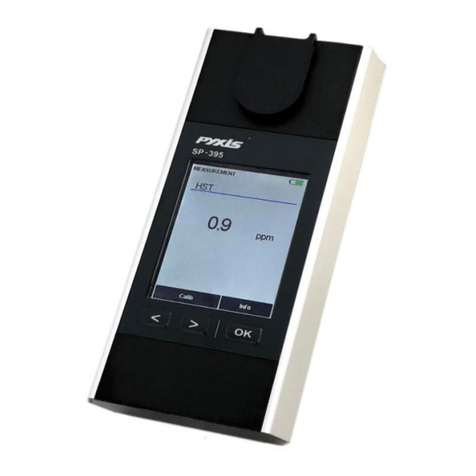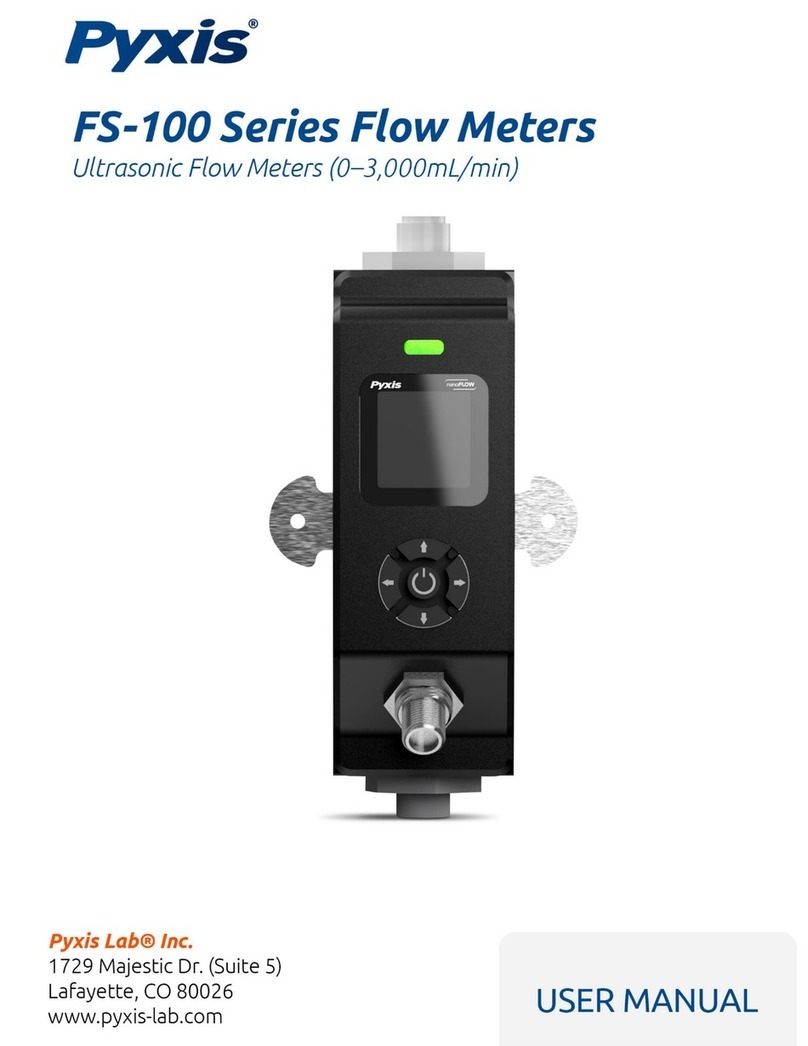Pyxis SP-700 Multimeter Operation Manual 3
Table of Contents
1Introducing the Pyxis SP-700 Multimeter.....................................................................................4
1.1 Features of the Pyxis SP-700 Multimeter .....................................................................................4
1.2 Specifications ................................................................................................................................5
1.3 Unpacking the Pyxis SP-700 Multimeter.......................................................................................5
1.4 Standard accessories.....................................................................................................................5
1.5 Optional accessories .....................................................................................................................6
1.6 Dual function light shield ..............................................................................................................6
2Using the Pyxis SP-700................................................................................................................7
2.1 Battery installation........................................................................................................................7
2.2 Using the SP-700 control keys.......................................................................................................8
2.3 Turning the SP-700 on and off ......................................................................................................9
3Multiple parameter measurement ..............................................................................................9
3.1 Measurement................................................................................................................................9
3.2 Temperature measurement..........................................................................................................9
3.3 Conductivity temperature compensation...................................................................................10
3.4 High color and turbidity warning ................................................................................................10
3.5 pH measurement ........................................................................................................................10
3.6 ORP measurement......................................................................................................................11
4Calibrating the SP-700...............................................................................................................11
4.1 PTSA standalone calibration (2 point with zero) ........................................................................12
4.2 Conductivity Calibration..............................................................................................................15
4.2.1 Combined calibration procedure........................................................................................15
4.2.2 Standard conductivity calibration (500, 1000, 2500, or 5000 µS) ......................................17
4.2.3 User-defined conductivity calibration procedure...............................................................20
5pH and ORP calibrations ...........................................................................................................23
5.1 pH electrode calibration .............................................................................................................23
5.1.1 One-point calibration..........................................................................................................23
5.1.2 Second-point calibration.....................................................................................................24
5.1.3 Third-point calibration ........................................................................................................25
5.2 ORP calibration ...........................................................................................................................26
6Device information and diagnosis .............................................................................................27
7Device maintenance & cleaning ................................................................................................28
8Replacing the pH and ORP module (Hardware before SN: 170000).............................................30
9Replacing the pH and ORP module (Hardware after SN: 170000)................................................31
10 Bluetooth connection ...............................................................................................................33
11 Calibrate ST-500 with SP-700 ....................................................................................................34
12 REGULATORY APPROVAL ..........................................................................................................36

